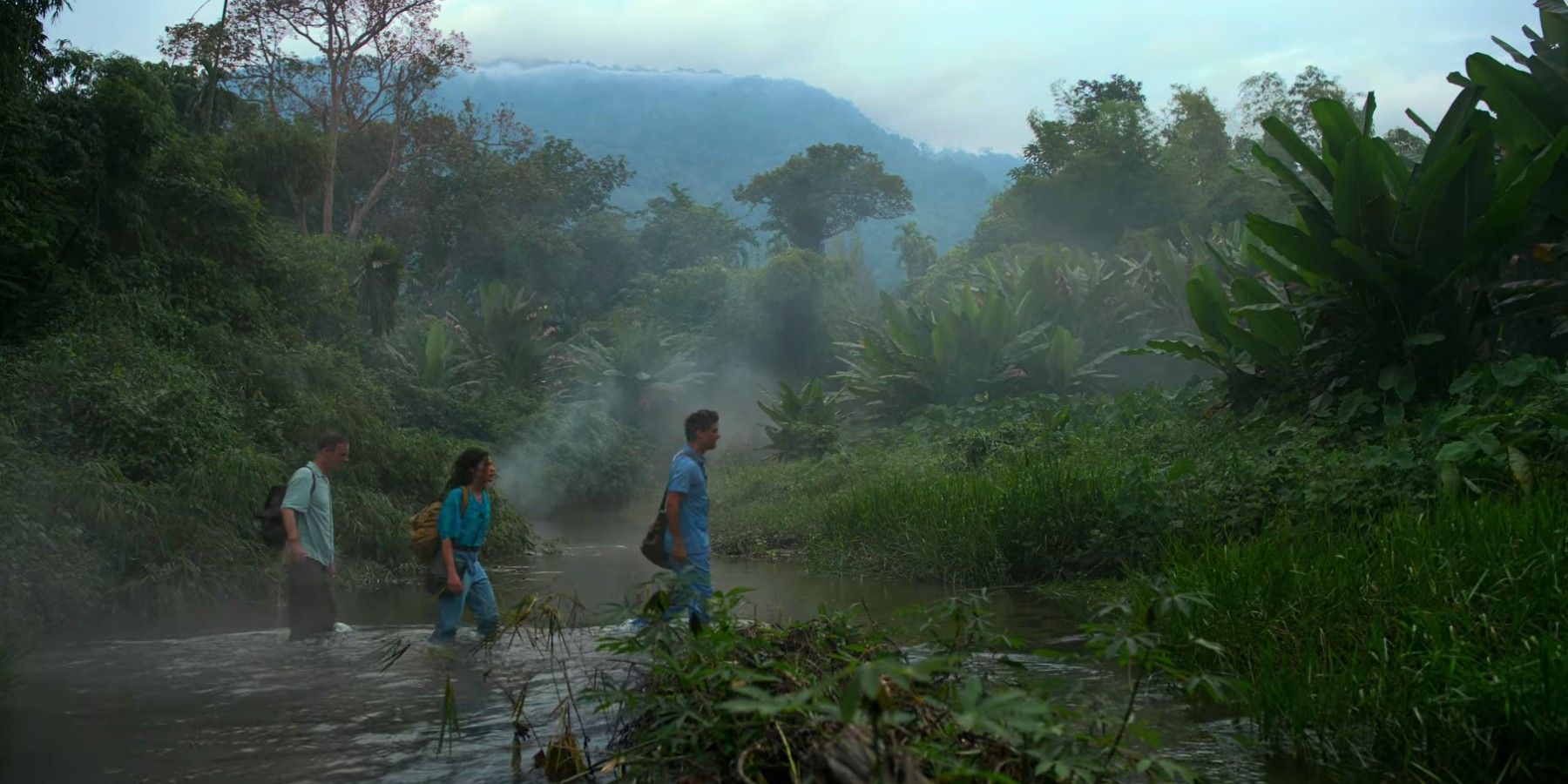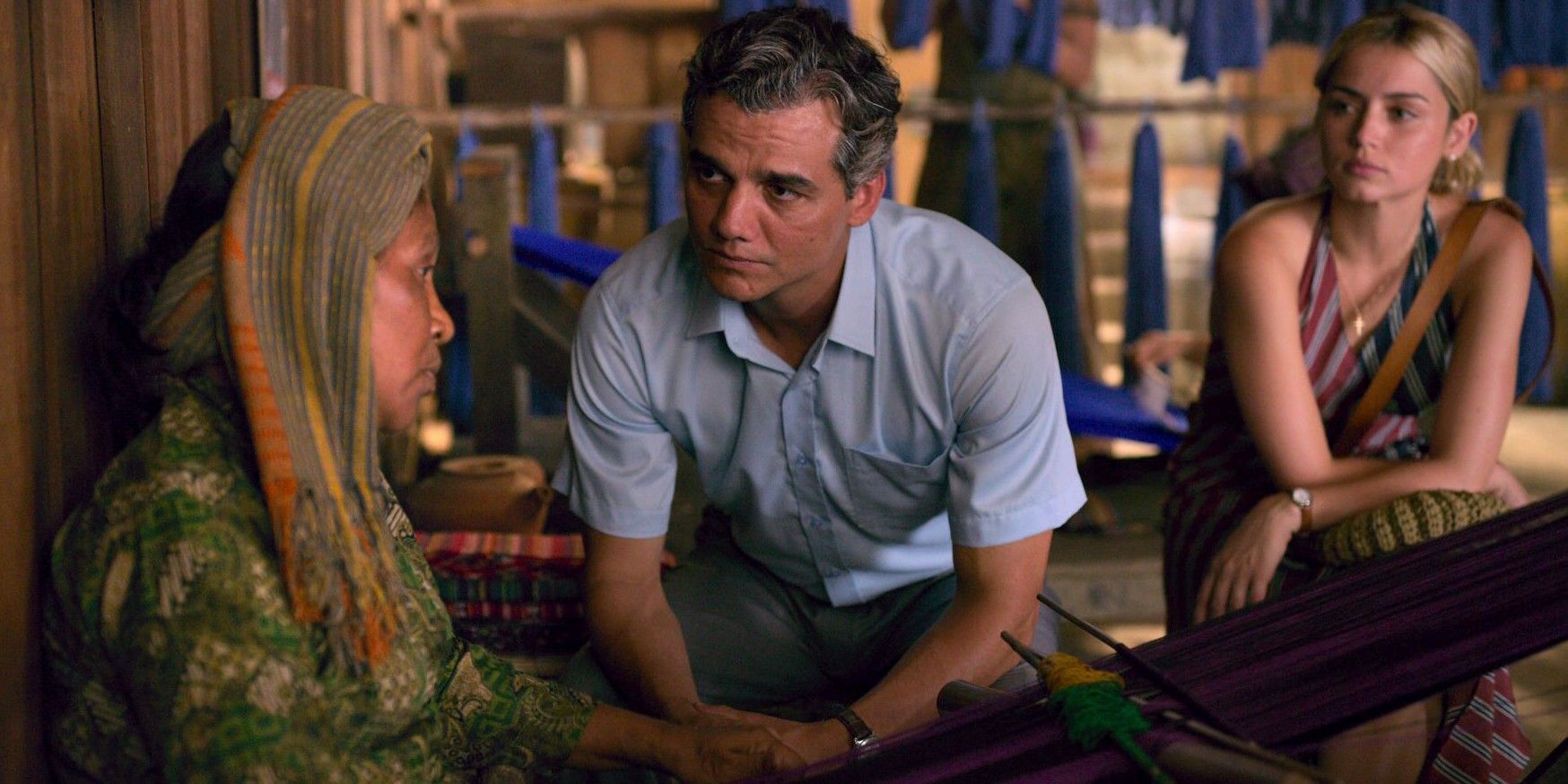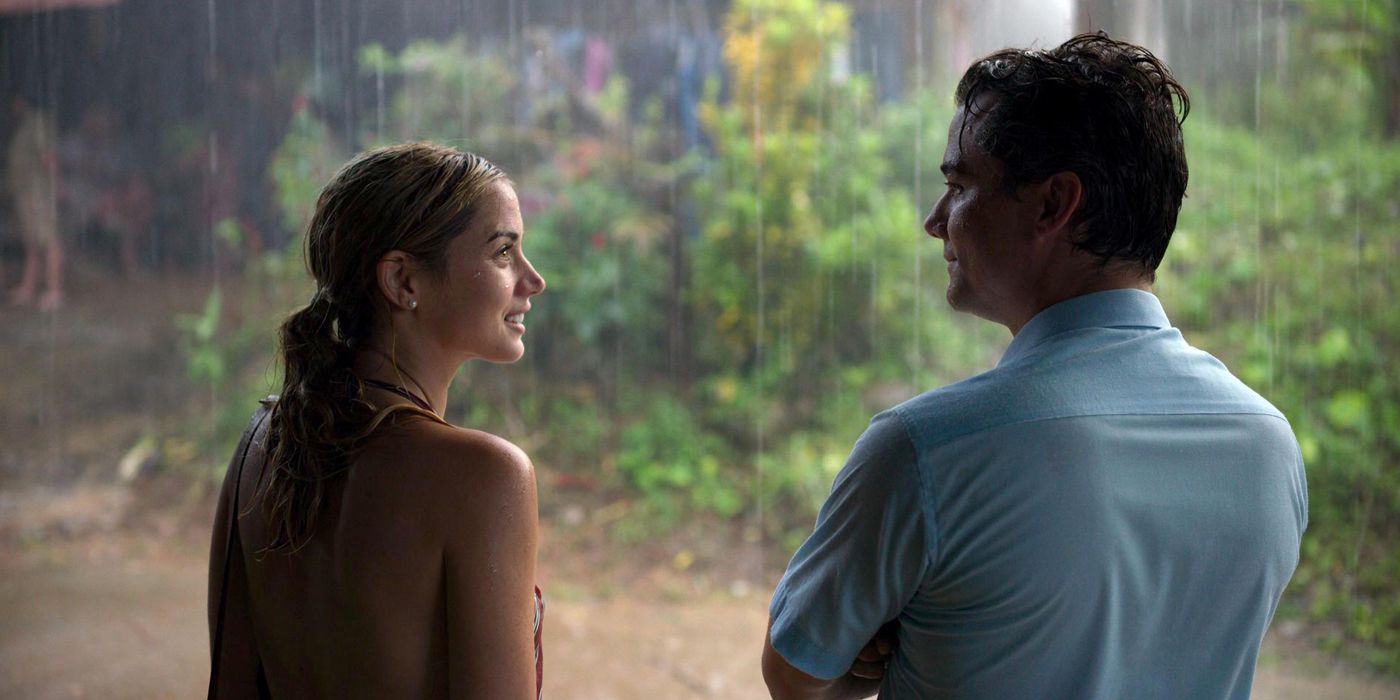
Netflix's new film Sergio is based on the true story of Sergio Vieira de Mello, a celebrated United Nations diplomat who was tragically killed in the bombing of UN headquarters in Baghdad on August 19, 2003. He was 55 years old. Wagner Moura plays Vieira de Mello in the film, which was directed by Greg Barker and sees Vieira de Mello looking back on his life as he lies trapped under the rubble in his final hours.
Also available on Netflix is an HBO documentary that features interviews with Vieira de Mello's partner, Carolina Larriera (played by Ana de Armas in the new film) as well as his close friends and those who were with him when he died. Sergio recreates many of the news clips shown in the documentary, along with a welcome video for new recruits to the UN that Vieira de Mello made, which opens and closes the film.
Respectful of its subject matter, Sergio takes few liberties with the truth and acknowledges the only major departure in closing cards before the credits. Here's how Sergio compares to the true story, and some of the details that were left out of the film.

Vieira de Mello's time working in Cambodia for the UN from 1992-1993 is only touched on briefly in Sergio, which focuses more on his later success in East Timor. After militant leader Xanana Gusmão (Pedro Hossi) reminds Sergio of his shortcomings in Cambodia, a flashback follows of his meeting with Khmer Rouge co-founder Ieng Sary (Sahajak Boonthanakit). The portrayal of this meeting stretches the truth considerably with the claim that Vieira de Mello and Sary studied at the Sorbonne in Paris together at the same time, and both took part in the Night of the Barricades student protests of 1968. While they did indeed both study in Paris and Vieira de Mello took part in the protests (the line about him having a scar to prove it is accurate to real life), Sary was in Paris a considerable time before Vieira de Mello was, and was living in Cambodia during the Night of the Barricades.
Their meeting as portrayed in Sergio is symbolic of the fascination that Vieira de Mello had with the politics and tactics of the Khmer Rouge, given that its leaders had studied the same philosophical ideas as he himself had in Paris. According to Samantha Power's biography Chasing the Flame: Sergio Vieira de Mello and the Fight to Save the World, Vieira de Mello once said, "I want to look into Ieng Sary’s eyes. I want to see if they are still burning with ideological fire." Vieira de Mello did achieve a considerable success in Cambodia, convincing Sary to allow the repatriation and resettlement of hundreds of thousands of refugees. However, the United Nations ultimately withdrew from the country completely by the end of 1993, having spent $2.5 billion on the mission, and in 1997 the fragile government that had been established by the UN election was ended by a violent coup.

Vieira de Mello's role in East Timor as the administrator in charge of leading the country's transition from Indonesian occupation to an independent state is the main focus of the flashbacks in Sergio. As noted in the HBO documentary, Vieira de Mello was effectively given the powers of an autocrat in East Timor but never behaved like one, instead focusing on his mission to facilitate the creation of a new democratic government within what would become the first new nation of the 21st century. As depicted in Sergio, the UN's presence in East Timor initially led to hostility and confrontation, with Gusmão at one point referring to it as a "second occupation."
Gusmão's skepticism towards the UN was allayed after he was given a timetable for how long the transition period would last, and Vieira de Mello formed a new cabinet comprised only of Timorese members. The President of Indonesia, Abdurrahman Wahid, did eventually issue an apology in early 2000 for the atrocities committed during Indonesia's occupation of East Timor, laying a wreath at the site of a massacre by Indonesian troops. Presidential elections were held in April 2002 and Gusmão won the election, with East Timor being declared an independent state the following month.

Sergio Vieira de Mello married his first wife, Annie, in 1973. They had two sons, Laurent and Adrien, but the marriage fell apart due to Annie and the children living in Geneva and Vieira de Mello frequently being away from home in the field. A detail noted in the HBO documentary but left out of the movie is that Vieira de Mello was known to be unfaithful to his wife even before their separation. Having missed out on so much of seeing his sons grow up due to his attachment to his work, Vieira de Mello had hopes to start a new family with Carolina Larriera, whom he met during his mission in East Timor.
While there is naturally some embellishment in Sergio's romantic scenes, one moment that is surprisingly not a work of fiction is the scene in which Carolina goes to Sergio's house in Dili and discovers that he has filled it with candles and paper hearts. As Power recounts in her biography of Vieira de Mello:
[Larriera] let herself in through the side door and found a row of candles leading her from the doorway to the living room. Sprinkled on the floor were paper hearts that he had cut out of colored construction paper. “From now on, it’s the new Sergio!” he said, emerging. Larriera was skeptical. “I have changed,” he said. “And I will change. Don’t believe me. Watch me.” From that point on, the couple referred to their relationship before his October turnaround as their “prehistory.” “History,” he said, “begins today.”
After being separated from his first wife for more than twenty years, Vieira de Mello finally filed a lawsuit for divorce and a civil union with Larriera in 2000, and the two remained together for the following three years, up until Vieira de Mello's death. They had planned to get formally married after returning home to Rio de Janeiro.

The bombing of Canal Hotel, the United Nations headquarters in Baghdad, as portrayed in Sergio is very accurate to real life. Vieira de Mello had indeed ordered that a heavy-duty US military vehicle be removed from outside the headquarters so as not to give the impression that the United Nations was working under the orders of the United States. A detail left out of Sergio is that just a couple of weeks before there had been another terrorist bombing in Baghdad, at the Jordanian embassy. This was suspected of being ordered by the same al-Qaeda leader who claimed responsibility for the Canal Hotel bombing, Abu Musab al Zarqawi. There was also another terrorist car bombing at the UN headquarters a month after the one that killed Vieira de Mello.
Altogether 22 people were killed in the Canal Hotel bombing. Vieira de Mello's colleague Gil Loescher (Brían F. O'Byrne) was trapped underneath the rubble with him, and both of his legs had to be amputated in order to remove him from the building. As the ending of Sergio notes, Loescher was not actually in East Timor with Vieira de Mello. His presence in those scenes is described as an "amalgam" of other colleagues that Vieira de Mello worked with, and serves as a way of giving Loescher an expanded role in the story.
As touched on in Sergio, efforts by Bill von Zehle (Garret Dillahunt) and Andre Valentine (Will Dalton) to rescue Vieira de Mello were hampered by a lack of equipment. In the end they had to resort to using a woman's purse on a bit of rope to ferry bricks and rubble out of the hole. Despite their hours of labor to save him, Vieira sadly passed away due to his injuries, though he was able to speak to Carolina before he died. Soldiers repeatedly tried to make her leave the area, but she insisted on seeing him. Her last words to her, after she left to get help, were "come back quickly, I love you."
https://ift.tt/2XItw2H
April 18, 2020 at 05:34AM




